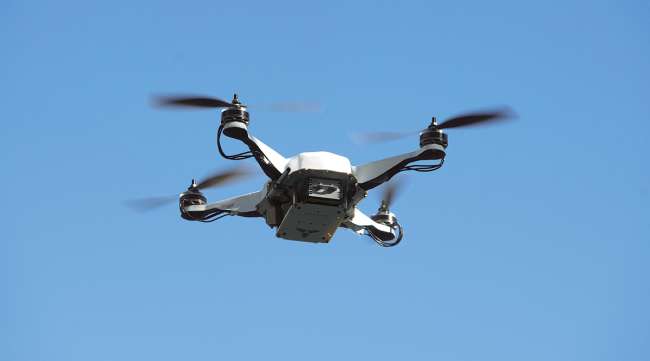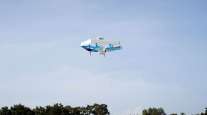Staff Reporter
Experts Discuss Challenges and Opportunities of Drone Delivery

[Stay on top of transportation news: Get TTNews in your inbox.]
Drones can offer an appealing alternative to traditional cargo delivery methods, according to Daniel Friedenzohn, associate dean of the College of Aviation at Embry-Riddle Aeronautical University.
Friedenzohn, who also works as an associate professor of aeronautical science, said drones offer a good alternative for those with transportation-related needs, such as people with disabilities, and may even help reduce traffic congestion. He spoke Sept. 18 at a webinar hosted by the Federal Highway Administration, which was part of the agency’s Talking Freight seminar series.
However, Friedenzohn said unmanned aircraft systems (UAS) may present complexities in terms of law enforcement and constituent concerns about privacy and intentional misuse. For example, he said that while many people don’t think twice about treading on their neighbor’s lawn, they wouldn’t want a drone flying over their house.

“I think there’s a role for state and local government to play,” Friedenzohn said. “There are still some issues to resolve over the coming years, and I’m quite sure that will happen.”
Friedenzohn said responsibilities such as policing, zoning and privacy policies usually fall to local government agencies. He pointed out that urban and rural areas may have different needs. For instance, many rural areas rely on drones to inspect farmland.
“In some cases, it may make sense for a state to say, ‘We’re going to let local government regulate some of this activity,’ ” Friedenzohn said. “Every community has their own needs.”
WANT MORE NEWS? Listen to today's Daily Briefing
In addition to potentially alleviating congestion, drones offer a more environmentally friendly alternative to vehicles. Erica Wygonik, director of consulting firm Resource Systems Group (RSG), and her team conducted a study to evaluate variations in carbon dioxide emissions across three different delivery modes. The scenarios included a person driving to the store and back home to retrieve some small item, such as an ingredient for a recipe or medicine for a sick child, an on-demand delivery service such as Uber Eats, and a drone delivery routed between a drone depot and a person’s home.
The study found that drones produce significantly less carbon dioxide emissions than either scenario that required vehicles. The results indicated that a drone generates approximately 50 grams of carbon dioxide emissions per trip, while a person driving a car to retrieve an item from a store generates 26 times more carbon dioxide per trip than the drone.

Wygonik
“Drones are incredibly efficient when it comes to [carbon dioxide] emissions,” Wygonik said.
Rachel Carlstrom, a senior leadership team program manager within the Federal Aviation Administration’s UAS Integration Pilot Program, said drones can be used to improve safety. For example, drones can be used to conduct infrastructure inspections and deliver important medical supplies.
FAA’s UAS Integration Pilot Program is meant to facilitate cooperation between state and local government agencies and private sector groups, such as drone manufacturers. The purpose is to help craft federal rules that balance local and national interests related to drone use, improve communication between government agencies, address privacy concerns and speed up the approval of operations that require special authorizations.
One program participant, the University of Alaska, has used drones for pipeline inspection in remote areas and severe climate conditions. Carlstrom said the North Carolina Department of Transportation used drones to assess damage after severe storms caused flooding in 2018. Drones have even been deployed to deliver blood for people in Rwanda. Carlstrom said blood delivery by drone could have implications in the U.S. if a car accident occurs on a busy highway and emergency medical technicians don’t have all the supplies they need.
“We are seeing lives being saved,” Carlstrom said.




